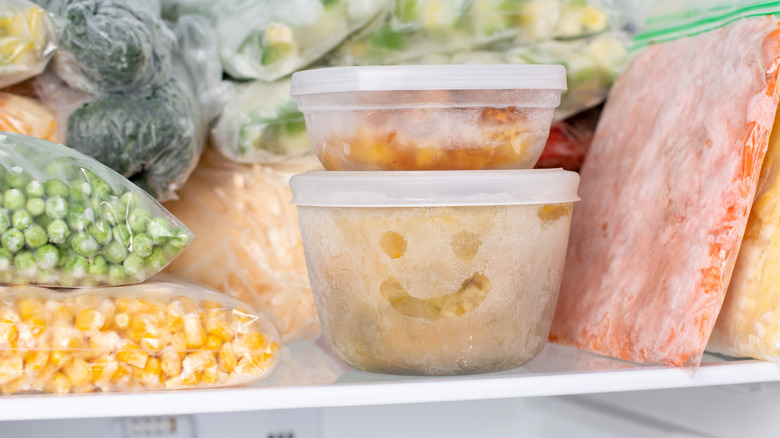The Finishing Tip To Remember When Freezing Big Batches Of Soup
Soup is one of the best meals to make in bulk and save for later, in large part because it is so easy to freeze and reheat. However, before you start freezing your freshly made soup, there's one thing you need to keep in mind — and it has to do with the garnish.
Many soups are topped off with a garnish — from fresh basil atop a hearty minestrone to sliced avocado atop a spicy black bean soup to even just your favorite crouton or cracker. The garnishes may be an integral part of the dish — and your enjoyment of it — but it's important for the garnish to be fresh. Some garnishes are okay to freeze, such as croutons, herbs, or even shredded cheese. However, they require different thawing and reheating instructions and would need to be frozen separately. After all, if they were frozen right in the soup, their texture, as well as the soup's overall mouthfeel, would be negatively impacted.
To ensure the freshest taste and make things easier for yourself (having just one component to reheat instead of several), it's best to stick with fresh garnishes on reheated soup. Add them to the dish just before serving.
What else to know about freezing and reheating soup
After you've made your fresh batch of soup, the first thing to do before freezing is to let it cool completely. To do so quickly, you can fill up your sink with ice then place the soup pot into the ice bath and start stirring (which will release heat).
Once it's cooled, you can transfer the soup to Tupperware containers, which you'll want to label with the date — most soups last between two and three months in the freezer, so you'll want to make sure you remember to revisit the meal before then. Additionally, instead of using containers, you can opt to store the soup in individual portion sizes, using either a muffin tin or freezer trays with bigger slots for storing soup portions.
When it comes time to enjoy the soup again, you can thaw it in the fridge overnight or, if you need a speedier process, you can place it in a bowl of water. To reheat, you can either use the stovetop or the microwave.

